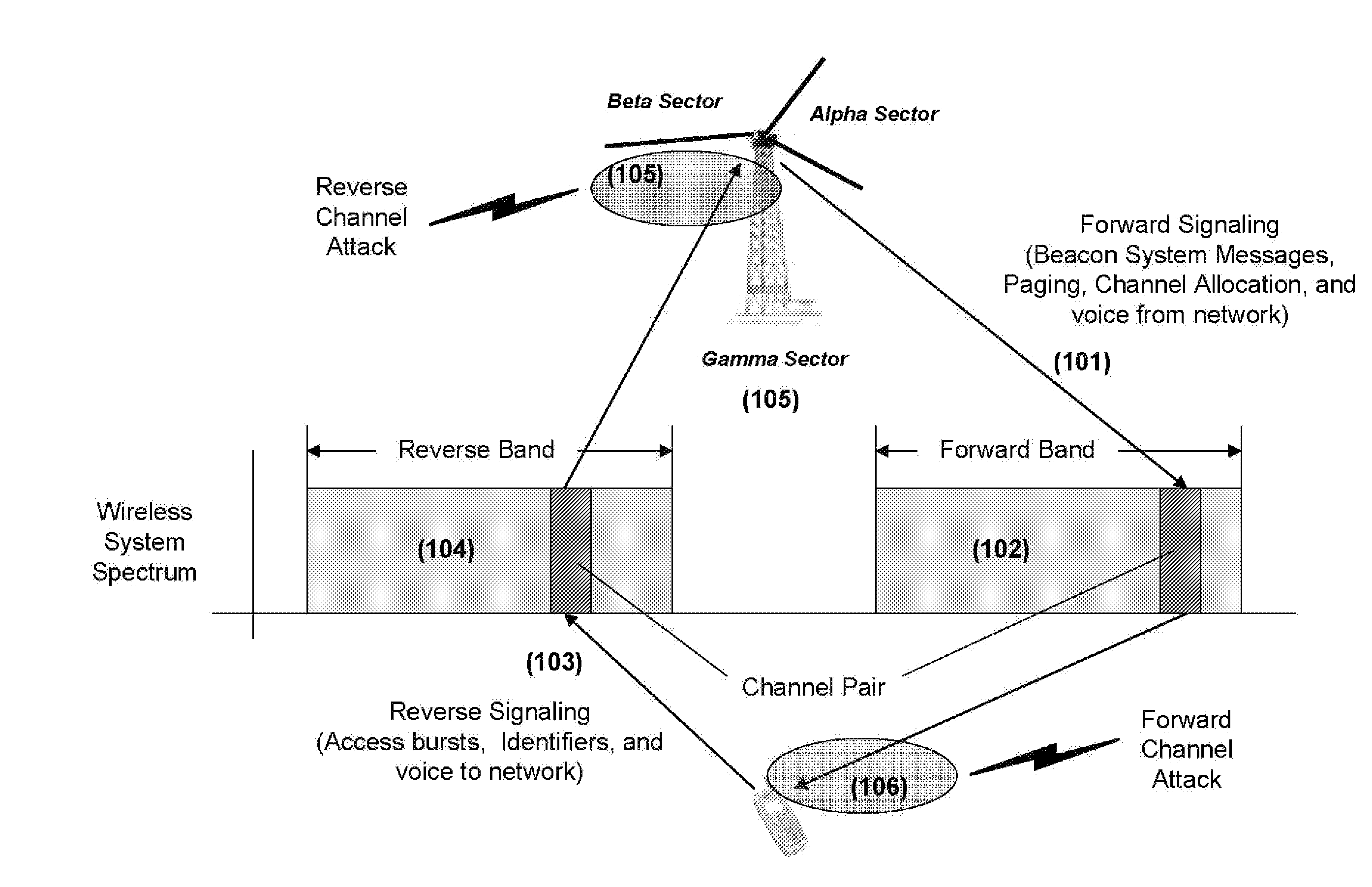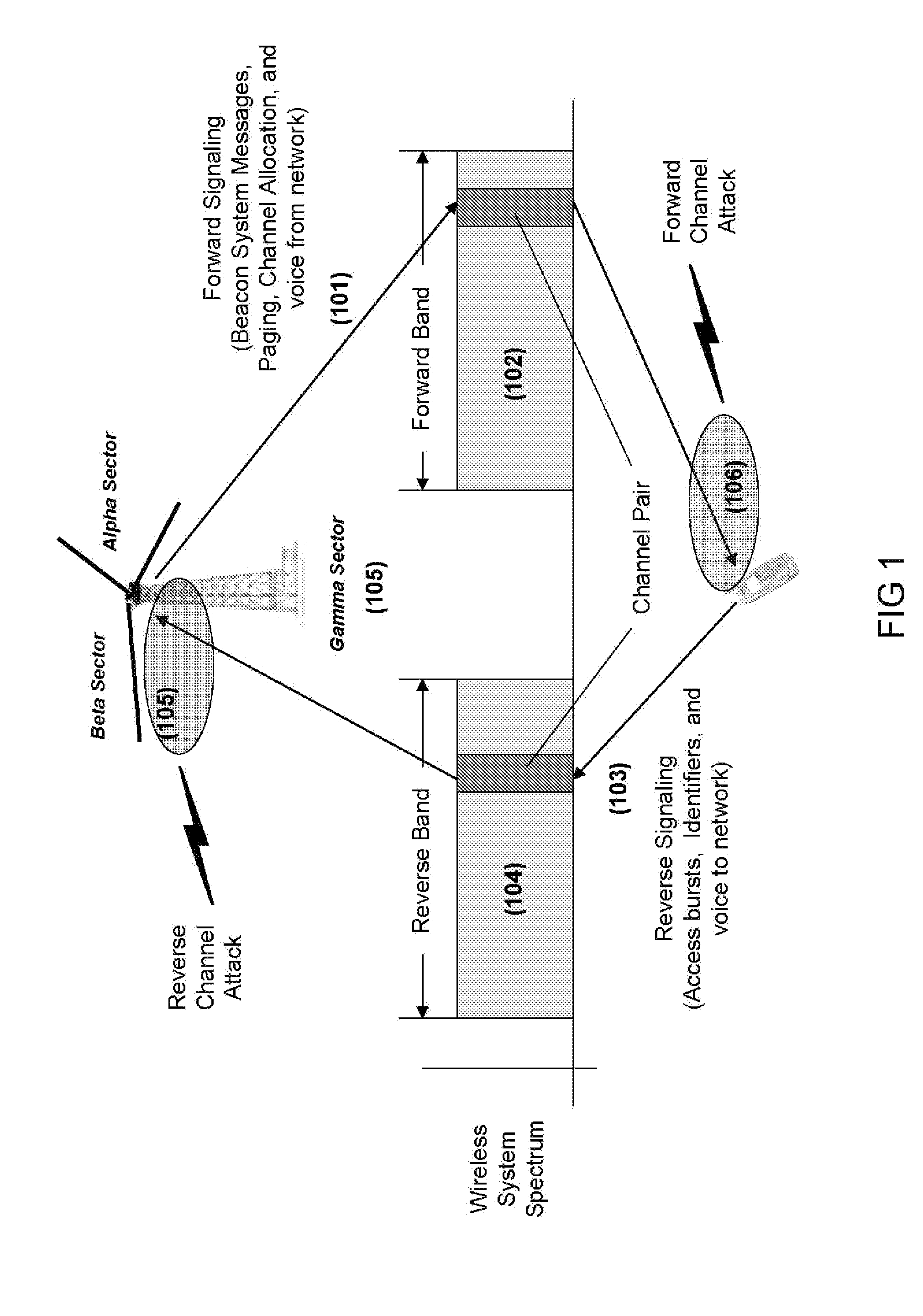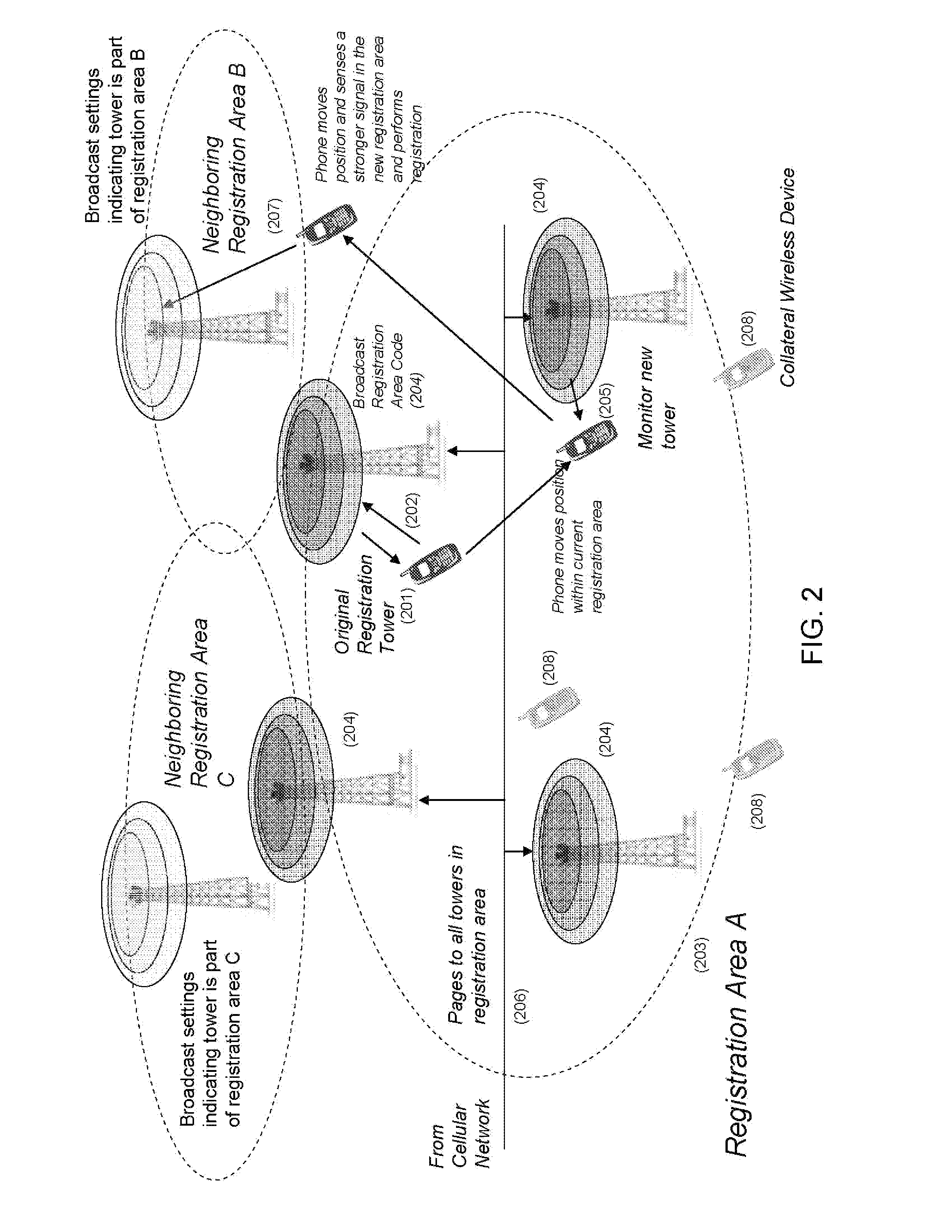Methods of Remotely Identifying, Suppressing, Disabling and Access Filtering Wireless Devices of Interest Using Signal Timing and Intercept Receivers to Effect Power Reduction, Minimization of Detection, and Minimization of Collateral Interfernce.
a technology of wireless devices and filtering devices, applied in the field of remote identification, suppressing, disabling and access filtering wireless devices of interest, to achieve the effect of effectively disabling the wireless devi
- Summary
- Abstract
- Description
- Claims
- Application Information
AI Technical Summary
Benefits of technology
Problems solved by technology
Method used
Image
Examples
Embodiment Construction
[0080]Certain Definitions:
[0081]Cellular—Wireless communication in any of the generally accepted bands allocated for individual commercial subscriber based voice or data communications.
[0082]PCS—Personal Communications Systems (synonymous with ‘cellular’ for purposes of this patent application)
[0083]Handset—A mobile device used by a subscriber for voice communication and is a particular type of wireless device. This term is often used interchangeably with wireless device.
[0084]Wireless Device—any device be it a mobile wireless device, a portable data assistant or pager that operates on any cellular, PCS or similar system that nominally provides for voice and data communications.
[0085]Standards—The governing technical standards describing the operation of certain cellular or other wireless systems.
[0086]CDMA (CDMA 2000)—Code Division Multiplexed Access as governed by the TIA IS-95 and IS-2000 standards.
[0087]GSM—Global System for Mobile Communications—ETSI standard describing a secon...
PUM
 Login to View More
Login to View More Abstract
Description
Claims
Application Information
 Login to View More
Login to View More - R&D
- Intellectual Property
- Life Sciences
- Materials
- Tech Scout
- Unparalleled Data Quality
- Higher Quality Content
- 60% Fewer Hallucinations
Browse by: Latest US Patents, China's latest patents, Technical Efficacy Thesaurus, Application Domain, Technology Topic, Popular Technical Reports.
© 2025 PatSnap. All rights reserved.Legal|Privacy policy|Modern Slavery Act Transparency Statement|Sitemap|About US| Contact US: help@patsnap.com



